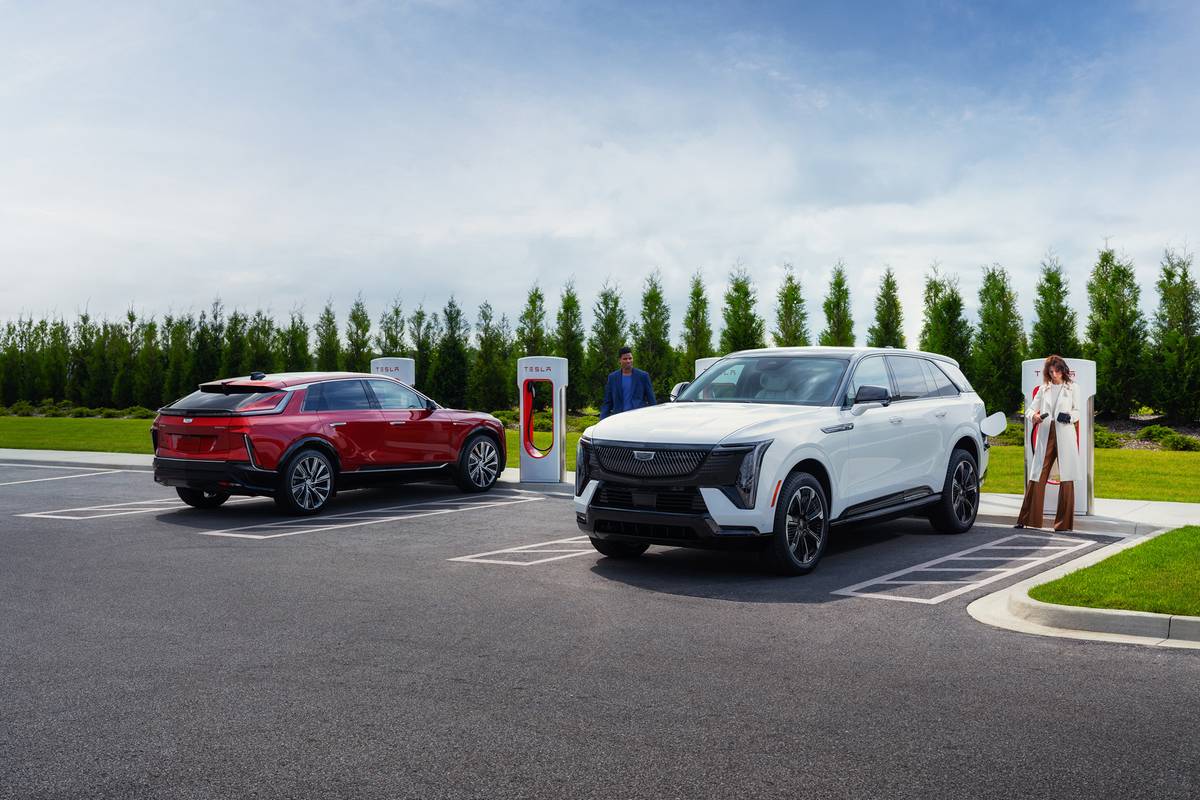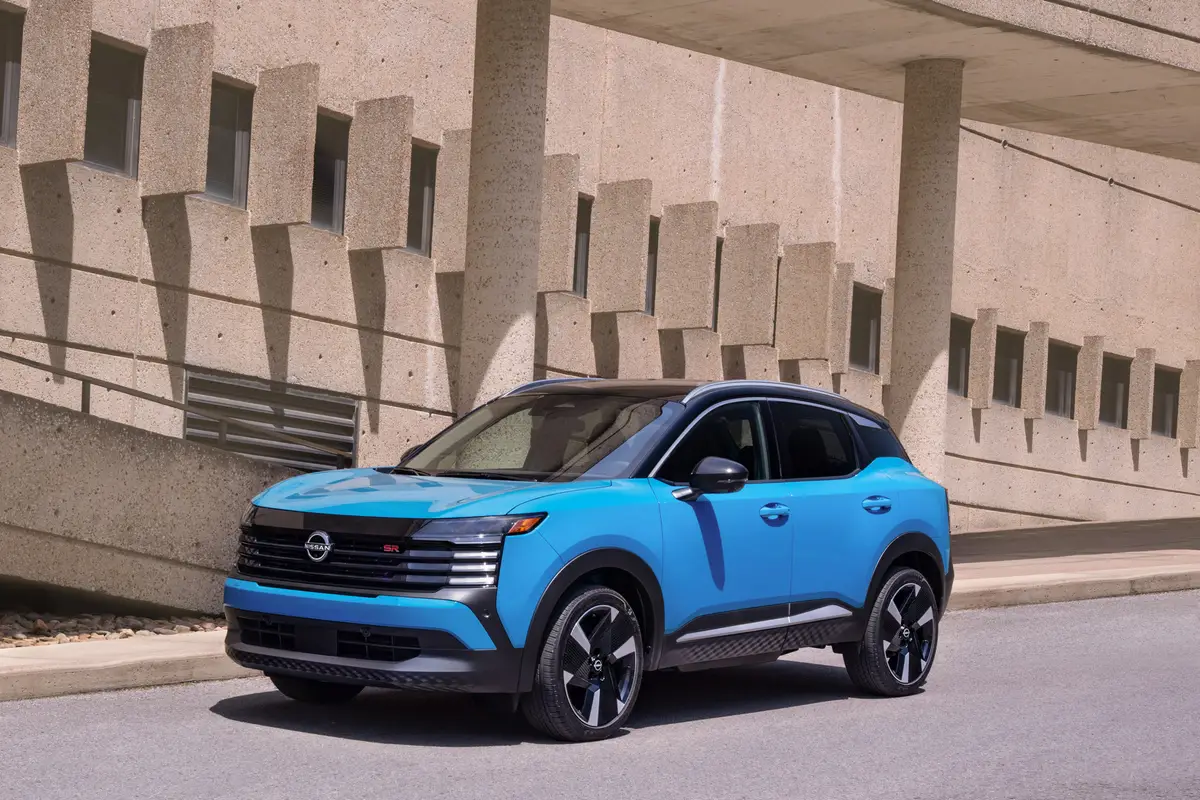chicagotribune.com's view
Saab has bummed us out.
Used to be Saab was for those who smoked pipes, wore berets, talked toferns on the walls, floors and ceilings of their homes, ate sushi, lived withcats and basically were weird folks who marched (in wing tips) to a differentdrummer.
Then, in 1990, General Motors bought a 50 percent interest of the Swedishmaker of really weird cars for really weird people and now there’s one lesscar and car owner to pick on. GM has had a positive influence.
We tested the 1999 9-5 sedan (Cartalk, March 22) and now have spent timebehind the wheel of the 1999 9-3 convertible. With one redesign, GM broughtSaab into the 20th Century and primed it for the 21st.
The 9-3 is the successor to the 900, just like the 9-5 is the successor tothe 9000. The 900 was a bland, conservative machine that didn’t merit a secondlook. The 9-3 is fashionable and, in convertible duds, so attractive you’dthink it was designed by Chrysler, the styling champ.
The trick with a soft top is to add it without losing body rigidity. Onceyou get too much body flexing, you start getting squeaks and rattles andnoises whether the top is up or down. The 9-3 is solid.
Another trick with a soft top is to come up with a power system that’snovel. Saab has copied the top on the Mercedes SLs that, with the push of abutton, motors into a hidden compartment that’s then concealed when thetonneau cover flips down. All this while you simply sit behind the wheel. Nopushing, tugging, unzipping and fussing with fasteners. Very nice touch.
And the folks from Saab paid attention to the common convertible annoyanceof the canvas or vinyl wrapping around the area where rear side windows wouldusually be, blocking out effective side vision for lane changing and mallparking. The Saab solves the problem with rear side windows on the 9-3 thatmotor all the way down.
OK, so once the top is down and stored away, you still are left with aSaab, in which performance traditionally was on the manufacturer’s list ofpriorities right after carpet thickness and tissue-box placement.
The 9-3 is powered by a 2-liter, 185-horsepower, turbocharged 4-cylinderteamed with 5-speed manual. That’s right, we said a 185-h.p. turbo 4. It getsup and goes with the help of a smooth-shifting 5-speed manual transmission.
Automatic is an option that’s probably more in character than a 5-speedmanual in a convertible touring car, but the 4-speed automatic will set youback $1,110, not to mention the price of a night’s stay in intensive care whenyour brain sends the message to your heart that you just spent $1,110 for anautomatic.
The 9-3 with 5-speed is quick, yet blessed with a 21-m.p.g. city/27 highwayfuel-economy rating.
Where Saab chose to be a little conservative is in its suspension system,which is tuned on the soft side for comfortable ride more so than precisionhandling.
While a pleasure to drive, the 9-3 has some rough edges that needsmoothing, or, in the case of the footwell, some enlarging. The footwell,where you rest your sneakers (save your wingtips for a Volvo) is too narrow.
Apply foot to clutch and brake pedal at the same time and the space is sotight, ankle bone will touch ankle bone, which makes the $1,110 investment inautomatic seem a small price to pay for the ability to move your limbs.
For 1999, Saab, for the first time, has put a footrest on the floor to theleft in the footwell. The rubber pad keeps your shoe from wearing the carpetand provides a place to brace your leg in an impending front impact. Nicetouch, but if Saab had room for a footrest, it should have found room for bothfeet.
Another gripe is that Saab insists that the ignition be located on thefloor and that you engage reverse gear to remove the key. It’s a Saabtrademark, just like kidney-shaped grilles on the BMW. Sorry, but here’s one vote to put the ignition on the dash.
Base price of the 9-3 convertible we tested is $36,500. Standard equipmentincludes dual front and dual side air bags (housed in the seat); four-wheelanti-lock brakes; air conditioning; cabin air filter; leather upholstery;power locks/windows; cupholder/coinholder; rear-seat pass-through to trunk;electric rear window defroster; carpeted mats; speed control; AM/FM stereowith cassette; and digital trip meter.
Add $350 to heat the front seats, $100 for an in-dash CD player and $550for freight and you’re set, unless you invest $1,110 for the automatic to saveyour limbs.
You can upgrade to the 9-3 SE for $5,000 and get power/memory seats,automatic climate control, 16-inch wheels and tires and a firmer sportssuspension.
Having one less car make on the market to abuse brings a tinge of regret,but maybe with the industry megamergers, someone will buy Fiat or Renault,producers of buckets of bolts on wheels, and one or both will re-enter theU.S. market. We can only hope.
>>1999 Saab 9-3 convertible
© 1998 Chicago Tribune Wheelbase: 102.6 inches Length: 182.2 inches Engine: 2-liter, 185-h.p., turbocharged 4-cylinder Transmission: 5-speed manual EPA mileage: 21 m.p.g. city/27 m.p.g. highway. Base price: $36,500. Price as tested: $36,950. Includes $100 for in-dash CD player and $350for heated front seats. Add $550 for freight. Pluses: Styling gem. Comfortable. Good side and rear vision when powersofttop is up. Top motors out of sight quickly and cleverly hides undertonneau cover like a Mercedes SL. Soft but stable suspension. Smooth as silk5-speed. Minuses: Automatic a $1,110 option. Footwell a tad narrow so that whenfeet apply clutch and brake at same time, you assume the ballerina’s relevepose, which in layman’s terms means you become a clothespin. Ignition keystill on floor, and you have to engage reverse to remove it.
Latest news



